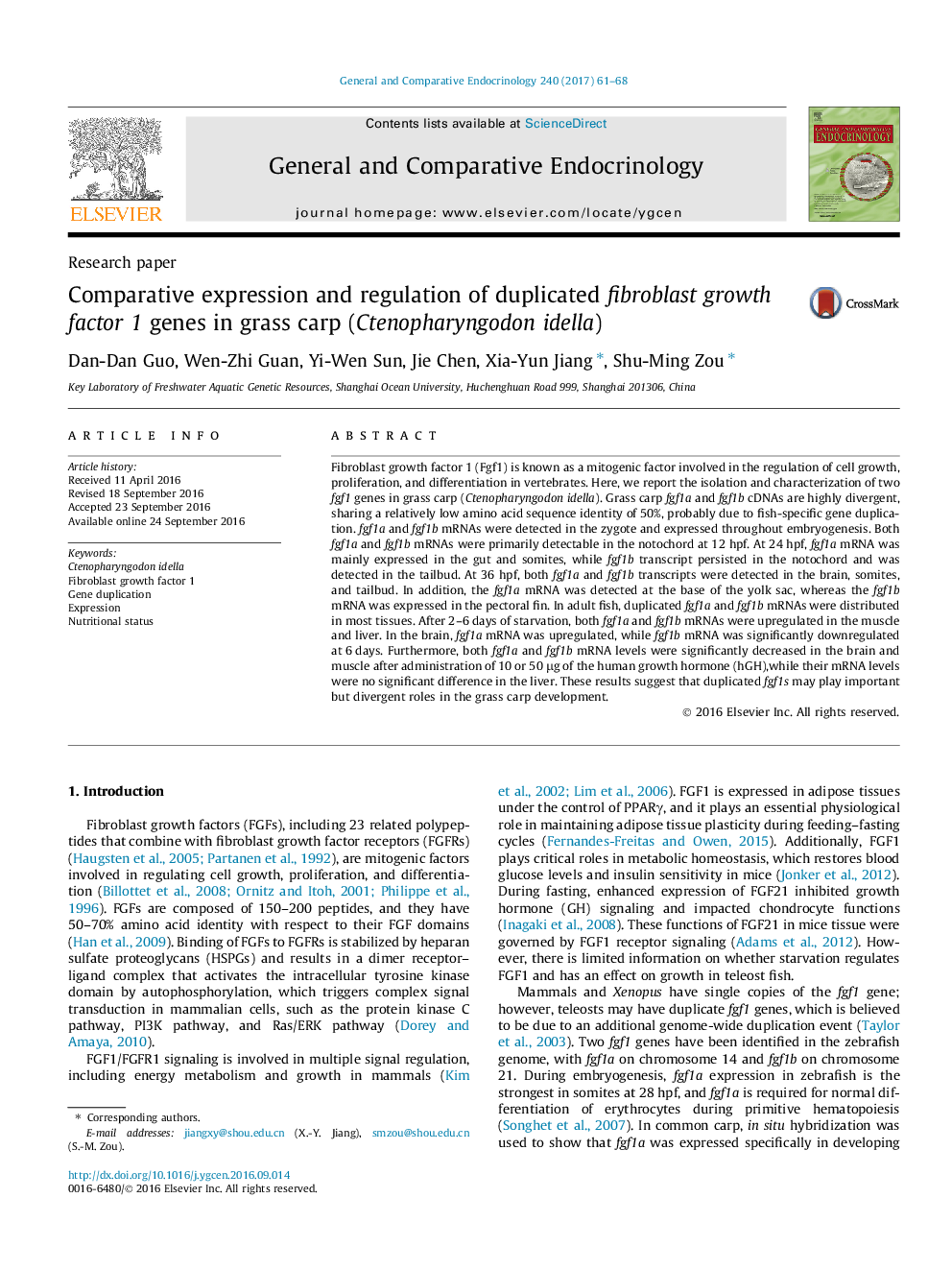| Article ID | Journal | Published Year | Pages | File Type |
|---|---|---|---|---|
| 8631519 | General and Comparative Endocrinology | 2017 | 8 Pages |
Abstract
Fibroblast growth factor 1 (Fgf1) is known as a mitogenic factor involved in the regulation of cell growth, proliferation, and differentiation in vertebrates. Here, we report the isolation and characterization of two fgf1 genes in grass carp (Ctenopharyngodon idella). Grass carp fgf1a and fgf1b cDNAs are highly divergent, sharing a relatively low amino acid sequence identity of 50%, probably due to fish-specific gene duplication. fgf1a and fgf1b mRNAs were detected in the zygote and expressed throughout embryogenesis. Both fgf1a and fgf1b mRNAs were primarily detectable in the notochord at 12 hpf. At 24 hpf, fgf1a mRNA was mainly expressed in the gut and somites, while fgf1b transcript persisted in the notochord and was detected in the tailbud. At 36 hpf, both fgf1a and fgf1b transcripts were detected in the brain, somites, and tailbud. In addition, the fgf1a mRNA was detected at the base of the yolk sac, whereas the fgf1b mRNA was expressed in the pectoral fin. In adult fish, duplicated fgf1a and fgf1b mRNAs were distributed in most tissues. After 2-6 days of starvation, both fgf1a and fgf1b mRNAs were upregulated in the muscle and liver. In the brain, fgf1a mRNA was upregulated, while fgf1b mRNA was significantly downregulated at 6 days. Furthermore, both fgf1a and fgf1b mRNA levels were significantly decreased in the brain and muscle after administration of 10 or 50 μg of the human growth hormone (hGH),while their mRNA levels were no significant difference in the liver. These results suggest that duplicated fgf1s may play important but divergent roles in the grass carp development.
Keywords
Related Topics
Life Sciences
Biochemistry, Genetics and Molecular Biology
Endocrinology
Authors
Dan-Dan Guo, Wen-Zhi Guan, Yi-Wen Sun, Jie Chen, Xia-Yun Jiang, Shu-Ming Zou,
